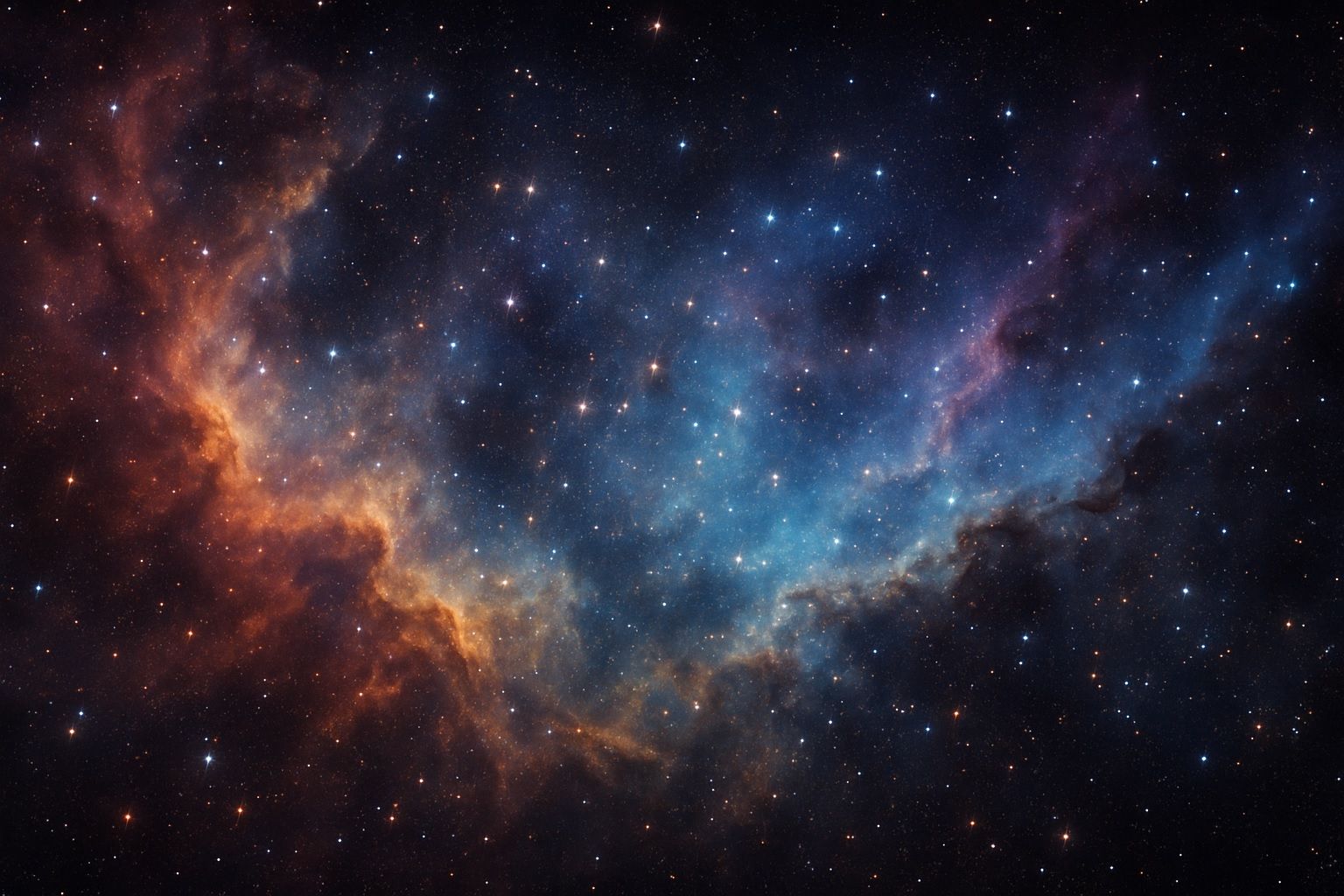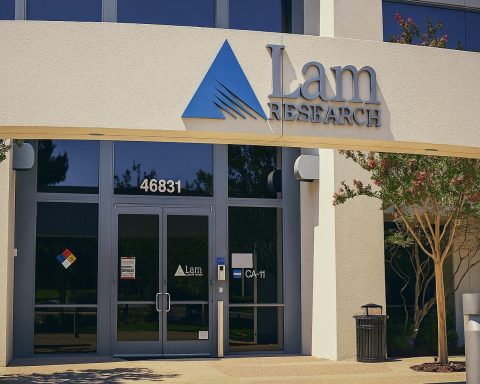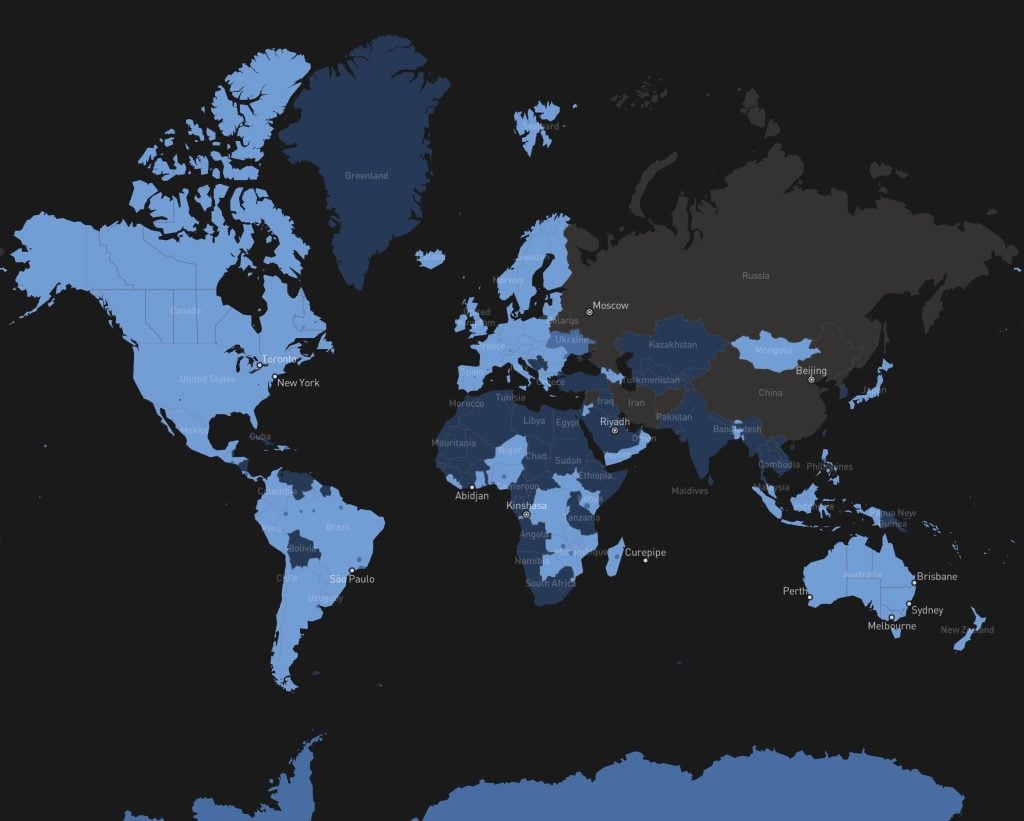- NASA’s Hyperion, launched in 2000 on the EO-1 satellite, collected 220 spectral bands from 400 to 2500 nm at 30 m resolution.
- A hyperspectral data cube stacks hundreds of narrow wavelength bands for every ground pixel, creating a two-dimensional spatial image plus a spectral dimension.
- Hyperspectral imaging records hundreds of narrow bands (often 10 nm or less) enabling identification of materials by their spectral fingerprints, unlike RGB’s 3 broad bands or multispectral’s 5–30 bands.
- Space-based hyperspectral sensors are typically passive, in sun-synchronous low Earth orbits, and commonly use pushbroom scanning to build full images with high signal-to-noise ratio.
- The VNIR-SWIR range of about 400 nm to 2500 nm covers diagnostic features for vegetation, soils, minerals, and water content.
- Notable missions include ESA’s PROBA-1 with the CHRIS sensor (launched 2001), Italy’s PRISMA (launched 2019, ~30 m), and Germany’s EnMAP (launched April 2022).
- The Carbon Mapper’s Tanager-1, launched in 2024, uses a JPL-designed imaging spectrometer to detect methane and CO2 plumes from individual facilities.
- In agriculture, hyperspectral data enables crop health, stress, and nutrient assessments via red-edge and near-infrared bands for precision farming.
- Commercial constellations include Orbital Sidekick’s GHOSt (launched 2021–2023; planned 6–8 satellites, ultimately 14), Pixxel with 5 m GSD and 150–300 spectral bands, and Satellogic’s NewSat hyperspectral sensor at about 25 m resolution with 25–30 bands.
- On-board AI and edge computing allow real-time anomaly detection and targeted data downlink, such as methane leaks, reducing data volume and speeding disaster response.
Imagine a satellite that not only takes pictures of Earth, but can also identify what materials compose each pixel of the image. This is the promise of hyperspectral imaging – a technology giving satellites “super-vision” across hundreds of colors beyond human sight. Hyperspectral sensors capture detailed spectral fingerprints of objects by measuring reflected light in dozens or even hundreds of narrow, contiguous wavelength bands [1]. In contrast, conventional color cameras (RGB) or multispectral sensors see only a few broad bands of light (for example, the red, green, and blue visible bands, plus perhaps a couple of infrared bands) [2]. By recording a contiguous spectrum for each pixel, hyperspectral imaging allows analysts to detect subtle differences in composition – for instance, distinguishing a healthy plant from a diseased one by its chlorophyll signature, or identifying minerals in soil from their unique spectral absorption features [3] [4]. This richer spectral detail comes at the cost of more complex data and processing requirements, but it enables a host of new insights into Earth’s surface and atmosphere.
To clarify the differences between standard imaging, multispectral, and hyperspectral, consider the number of spectral bands and what they can reveal:
| Imaging Type | Typical Number of Bands | Example Capability |
|---|---|---|
| RGB (Visible) | ~3 broad bands (red, green, blue) | Identify basic features by color (e.g. vegetation vs. water) – limited to human visual range. |
| Multispectral | ~5–30 bands (wider bands across visible & IR) | Differentiate broad land-cover types and some conditions. Ex: Sentinel-2’s 13-band imagery can distinguish certain crops and detect stressed plants [5]. |
| Hyperspectral | 100s of narrow contiguous bands (spanning visible through infrared) | Identify specific materials and chemicals by their spectral “fingerprints.” Ex: A 224-band AVIRIS sensor can detect plant chemical composition and even diseases or nutrient deficiencies [6]. |
In essence, multispectral imaging provides a coarse color palette of Earth, while hyperspectral imaging offers a full rainbow of information, enabling pinpoint identification of materials and conditions. This report will explore how hyperspectral imaging works from space, the cutting-edge missions and technologies involved, its growing range of applications, the challenges it faces (from big data to atmospheric effects), the role of AI in extracting insights, and what the future holds for these “eyes in the sky” that see far beyond what’s visible.
How Hyperspectral Imaging Works from Space
Space-based hyperspectral imaging relies on imaging spectrometers mounted on satellites to collect reflected sunlight from Earth’s surface across many narrow wavelength bands. Unlike a regular camera sensor that might have just three color filters (RGB), a hyperspectral instrument uses a dispersive element (like a prism or diffraction grating) to split incoming light into a continuous spectrum. This spectrum is then recorded by an array of detectors, effectively capturing hundreds of greyscale images, each at a different wavelength band, which stack together to form a 3D “data cube” (two spatial dimensions X,Y and one spectral dimension λ) [7]. Each pixel in this cube contains a detailed spectrum of the reflected light from that ground spot, serving as a unique signature of the material there.
Most orbital hyperspectral sensors operate as passive systems, meaning they rely on the Sun (or moonlight) as the illumination source rather than carrying their own radar or laser [8]. As the satellite orbits Earth (typically in low Earth orbit), the sensor often uses a pushbroom scanning method: it images a narrow swath (line) on the ground across all spectral bands simultaneously, and as the satellite moves forward, successive lines are recorded to build up a full image [9]. This method is efficient for space-based platforms – it allows a compact instrument design with high signal-to-noise ratio, at the cost of requiring precise motion and exposure timing to avoid image blur. (Some sensors use alternative methods like “whiskbroom” scanners that sweep side-to-side, or snapshot imagers that capture an area in one go, but pushbroom is most common in space [10].) The end result is the same: a massive hyperspectral data cube for each scene.
Because hyperspectral imagers spread light into many narrow bands (often 10 nm or less in bandwidth) [11], they can cover a broad range of the electromagnetic spectrum – typically visible and near-infrared through short-wave infrared (VNIR-SWIR), about 400 nm up to 2500 nm [12]. This range captures diagnostic spectral features of many Earth surface materials (pigments, minerals, water content, etc.). For example, sunlight reflecting off vegetation carries information in the visible and infrared about pigment concentrations and leaf structure, while reflection off soil or rocks can reveal mineral composition based on vibrational overtones in the short-wave infrared. By measuring these features, a hyperspectral satellite effectively performs remote chemical analysis of each pixel’s content [13].
To deploy such technology, satellites must provide stable platforms and calibration. Most hyperspectral satellites fly in sun-synchronous polar orbits in LEO (Low Earth Orbit), circling the Earth at a few hundred kilometers altitude and passing over each area at consistent local times [14]. This ensures uniform lighting conditions (e.g. same sun angle) for consistent data. The satellite carries not only the spectrometer but also onboard calibration devices (like lamps or reflectance panels) and performs maneuvers or uses reference targets (such as known desert sites) to calibrate and correct the data. Because the raw data are influenced by the atmosphere (gases and aerosols can absorb or scatter certain wavelengths), ground processing applies atmospheric correction algorithms to retrieve accurate surface reflectance from the top-of-atmosphere signals. Water vapor, for instance, has absorption bands that can imprint on the spectra, so these must be modeled and removed. Careful calibration and correction are critical; hyperspectral measurements are sensitive to environmental conditions and require thorough calibration to be useful [15].
In summary, a space-based hyperspectral imaging system combines optical engineering and orbital mechanics to capture spectral snapshots of Earth. It is essentially a flying laboratory: a spectrometer in orbit that continuously collects chemical and physical information across our planet’s surface. The next sections will delve into what we can do with this powerful “eye” and how it is transforming Earth observation.
Major Applications Across Various Fields
One of the reasons hyperspectral imaging is so revolutionary is the sheer breadth of its applications. By unmixing the spectral details of every pixel, these systems can uncover information that is invisible in ordinary imagery. Here we highlight major fields where space-based hyperspectral data is making an impact:
Agriculture and Forestry
Hyperspectral satellites are acting as precision farming and forestry sentinels. In agriculture, they enable monitoring of crop health, stress, and nutrient levels with unprecedented detail. Because plant leaves have specific spectral signatures that change with chlorophyll content, water content, or disease, a hyperspectral image can reveal issues like pest infestation, fungal disease, or nutrient deficiencies before they are visible to the naked eye [16]. For example, analysts can look at dozens of narrow bands in the red-edge and near-infrared region to assess subtle changes in leaf chemistry. Hyperspectral data also allow mapping of soil properties (like organic content or mineral composition) and even detecting crop residues or soil moisture differences in fields. This information helps farmers optimize fertilizer and water use and detect problems early, supporting the practice of precision agriculture.
In forestry, hyperspectral imaging can differentiate tree species and assess forest health on a large scale. Different tree species have unique spectral fingerprints (due to variations in leaf pigments and structure), so a hyperspectral survey can classify species in a mixed forest or identify invasive species among natives. Moreover, signs of stress – whether from drought, disease, or insect damage – often manifest as changes in the spectrum of foliage. For instance, a subtle shift in the red-edge position (the transition region between red and near-IR reflectance in vegetation) can indicate stress; hyperspectral sensors capture this shift clearly. Researchers have used spaceborne hyperspectral imagery to monitor phenomena like forest dieback, wildfire burn severity, and even to estimate biomass and carbon stocks by relating spectra to vegetation properties. In short, by providing a biochemical view of vegetation, hyperspectral imaging supports more sustainable and informed management of crops and forests.
Environmental Monitoring (Water and Land)
Environmental scientists benefit greatly from the “rich spectra” that hyperspectral imagers deliver. Water quality monitoring is a prime example. In coastal and inland waters, hyperspectral sensors (especially those covering visible and near-UV bands) can detect subtle color changes due to chlorophyll from algae, suspended sediments, or pollutants. This means satellites can map harmful algal blooms, sediment plumes from erosion, or even trace contaminants. For instance, different types of phytoplankton have distinct spectral absorption features; a hyperspectral image can distinguish these, helping monitor aquatic ecosystem health. Likewise, hyperspectral data can estimate dissolved organic matter or detect oil slicks on water – oil films alter the reflectance spectrum on the surface, making an oil spill visible as a spectral anomaly even when it’s hard to see in true color [17].
On land, hyperspectral imaging enhances environmental assessments by identifying minerals, soils, and vegetation types. In arid regions, it can map mineral deposits or soil composition (useful for understanding dust sources or land degradation). In wetlands or sensitive habitats, it helps differentiate plant communities. Importantly, hyperspectral satellites are becoming tools for pollution monitoring: they can detect chemical residues or industrial pollutants via their spectral signatures. A striking application has been the detection of methane leaks and other gas emissions – while gases are mostly transparent, strong point-source emitters (like methane leaking from a pipeline or landfill) can sometimes be inferred by the spectrum of reflected sunlight off the plume, especially in the short-wave infrared. In fact, hyperspectral data was used to spot methane “hotspots” (super-emitters) from space, which is crucial for climate mitigation efforts (more on that in the climate section).
Furthermore, the detailed spectral information allows change detection over time for environmental monitoring. Subtle changes in land cover – say, the early stages of drought stress in vegetation or slight discoloration of water from runoff – can be quantitatively detected by comparing hyperspectral imagery over time. This level of sensitivity supports proactive environmental management and conservation, as authorities can be alerted to issues before they become visible crises.
Defense and Security
In defense and intelligence, hyperspectral imaging has emerged as a powerful tool for seeing the unseen. Because different materials (paints, fabrics, metals, etc.) have unique spectral fingerprints, hyperspectral satellites can be used to detect and identify objects or activities that might be concealed in normal imagery. For example, a camouflaged military vehicle might blend into its surroundings in a color photo, but a hyperspectral sensor could pick up the spectral signature of its paint or the disturbed soil around it, flagging it as an anomaly. This capability is known as spectral target detection.
Defense agencies are interested in using hyperspectral data for tasks like surveillance, reconnaissance, and treaty monitoring. The technology can help detect clandestine activities such as illegal mining, hidden crop cultivation (e.g. illicit drug crops have distinct spectral features), or environmental modifications (like soil disturbed by buried explosives). In the maritime domain, hyperspectral sensors might assist in identifying ships or oil spills by their spectral trails. The U.S. National Reconnaissance Office (NRO) has taken notice of commercial hyperspectral companies – in 2023 the NRO issued study contracts to several firms (e.g. HyperSat, Orbital Sidekick, Pixxel, Planet, Xplore, among others) to evaluate how hyperspectral imagery could meet intelligence needs [18]. This indicates growing confidence that hyperspectral data from space could augment traditional imaging and radar for defense and security purposes.
Another cutting-edge concept is using hyperspectral sensors for space domain awareness – essentially turning the sensor to look at other satellites or space debris. By analyzing the spectrum of light from an object in space, one might infer its material or identify a satellite (since different satellite surfaces or paints might have known spectral profiles) [19]. While still experimental, this shows the versatility of hyperspectral imaging beyond Earth observation. Overall, in defense applications, the ability to “see” material composition gives hyperspectral imaging an intelligence advantage, provided the massive data can be effectively analyzed (often with the help of algorithms, as discussed later).
Mineral Exploration and Geology
One of the earliest uses of imaging spectroscopy (hyperspectral imaging) was in geology, and it remains a cornerstone application. Minerals and rocks have diagnostic spectral absorption features, especially in the short-wave infrared portion of the spectrum, due to their crystal structures and chemistry. A space-based hyperspectral sensor can thus map minerals over large, remote areas much faster and cheaper than traditional ground surveys. This is invaluable for mineral exploration, mining, and even geology research.
For example, a hyperspectral survey of a mountain range can reveal the distribution of minerals like iron oxides, clays, carbonates, or rare minerals by their spectra. Prospectors looking for ore deposits use these “mineral maps” to target promising sites. A famous anecdote in the field is using hyperspectral data to find indicators of gold: you won’t see the gold itself from space, but you might see minerals like hematite or gossan that form in association with gold-bearing ores. As one industry expert explained, “Don’t look for gold… look for these other indicator minerals” [20]. By detecting elements such as copper or lead that often co-occur with gold, hyperspectral imagery helps infer where rich deposits might lie [21].
Beyond mining, hyperspectral data supports geological mapping in general. It can distinguish rock types, map alteration halos around hydrothermal ore deposits, and identify soil types – all useful for understanding terrain and geological history. Governments and researchers have used satellite hyperspectral imagery for mapping things like volcanic ash composition, surface mineralogy in deserts (e.g. identifying gypsum vs. quartz sand), and even for locating construction materials or identifying asbestos in surface outcrops. As an added benefit, these satellites can cover rugged or dangerous terrain (like high mountains or conflict zones) safely from space. The result is a kind of “x-ray vision” for geologists, except it uses reflected light spectra instead of actual x-rays.
Climate Science and Atmospheric Studies
While much of hyperspectral imaging focuses on the surface, it also has critical applications for climate and atmospheric science. The detailed spectral measurements allow detection and quantification of greenhouse gases and atmospheric components when designed for that purpose. A recent breakthrough example is the Carbon Mapper mission: in 2024, the coalition behind Carbon Mapper launched Tanager-1, a satellite with a NASA JPL-developed imaging spectrometer specifically tuned to detect methane (CH₄) and carbon dioxide (CO₂) point sources [22]. This instrument can pinpoint methane and CO₂ plumes down to individual facilities like power plants, pipelines, or landfills by spotting the gases’ unique spectral absorption features in the short-wave IR [23] [24]. Such data is incredibly valuable for climate action – it provides “actionable data to help reduce emissions” by showing exactly where major leaks or sources are [25] [26].
Beyond greenhouse gases, hyperspectral sensors contribute to climate science by monitoring indicators of climate change on the surface. For instance, they can measure glacier and snow properties (like grain size or impurity content) through spectral reflectance, which relate to melting rates. They can assess ocean color in fine detail, aiding climate-linked studies of phytoplankton (the base of the marine food web and a carbon sink). They also assist in mapping carbon stocks on land by distinguishing vegetation types and health; healthy forests vs. degraded ones have different spectral signals, feeding into carbon cycle models.
Another atmospheric application is detecting aerosols and air quality. Some hyperspectral instruments (especially those with UV and visible capability) can characterize aerosols or pollution plumes. For example, instrument data can differentiate types of aerosols (dust vs. smoke vs. urban pollution) by their spectral extinction characteristics. While dedicated atmospheric sounders exist, the versatility of hyperspectral imagers means a single mission can sometimes serve both land and atmospheric monitoring needs.
In summary, hyperspectral imaging from space plays a dual role in climate science: directly measuring atmospheric constituents important to climate, and indirectly tracking climate change impacts on ecosystems and the cryosphere. As climate challenges grow, these space-based “eyes” provide detailed evidence and data to inform models and policy.
Disaster Management
When disasters strike, time and information are of the essence. Hyperspectral satellites are increasingly viewed as valuable assets in disaster management for their ability to extract detailed situational information. In the event of environmental disasters like oil spills, hyperspectral imagery can be used to identify the extent and even the thickness of oil on water by its spectral signature (oil alters the water’s reflectance in specific infrared bands). Similarly, after a chemical spill on land, hyperspectral data might help identify contaminated areas if the chemicals have distinctive spectral features or cause stress signals in vegetation.
For wildfires, hyperspectral sensors complement conventional fire imaging. While thermal infrared cameras detect active fire fronts, hyperspectral imagers (operating in reflective bands) can map post-fire burn severity by looking at char and ash spectral properties and vegetation health in different wavelengths. They can also help detect smoldering hot spots under smoke (though heavy smoke is opaque to visible light, some short-wave IR can penetrate thin smoke). Moreover, the ability to assess vegetation water content before fire seasons could assist in fire risk mapping – hyperspectral imagery can indicate how dry and stressed vegetation is (through moisture-sensitive spectral bands), which correlates with flammability.
After disasters like floods or hurricanes, hyperspectral data can be used to analyze water quality (e.g., looking for sewage or chemical contamination in floodwaters) or mold growth and building materials in damaged structures. In practice, one of the challenges in disaster response is data latency and volume. Hyperspectral imagery files are huge and traditionally take time to downlink and analyze, which isn’t ideal in an urgent situation. To address this, some modern systems are incorporating onboard processing to do intelligent data reduction. For instance, Orbital Sidekick has developed a space-based computing platform that can analyze hyperspectral data on-the-fly, flagging only the relevant “triggers” to send back to Earth [27]. This means rather than waiting for terabytes of raw data, first responders could quickly receive a map of, say, detected oil leak extents or locations of hazardous gas emissions derived from the hyperspectral sensor. Such capability – essentially using AI at the satellite (discussed more later) – can substantially speed up disaster analytics.
In summary, from oil slick detection to post-disaster environmental monitoring, hyperspectral imaging adds a layer of analytical depth to emergency management. Its unique value is in detecting what substances or conditions are present, not just where they are, which guides responders in making informed decisions.
Recent Developments and Breakthrough Missions
Although the concept of hyperspectral imaging has been around for decades (with airborne prototypes in the 1980s and 90s), it is only in the 21st century that we’ve seen regular use from space. The first spaceborne hyperspectral sensor was NASA’s Hyperion, launched in 2000 on the EO-1 satellite. Hyperion collected 220 bands spanning 400–2500 nm at 30 m resolution, proving that imaging spectroscopy could be done from orbit. It was a technology demonstrator, but it paved the way for operational systems [28]. In the years since, there have been a growing number of hyperspectral missions, both governmental and commercial:
- Government/Agency Missions: Several national space agencies deployed their own hyperspectral satellites, often for research and Earth monitoring. Notable examples include ESA’s PROBA-1 (launched 2001, carrying the compact CHRIS hyperspectral sensor), the Italian Space Agency’s PRISMA (launched 2019, ~30 m resolution hyperspectral imager) and the German Space Agency’s EnMAP (launched April 2022) [29]. EnMAP is Germany’s first dedicated hyperspectral satellite, designed for environmental mapping and climate research [30]. These missions typically provide data to scientists globally for applications ranging from land use to mineral exploration. In India, ISRO launched the HysIS satellite in 2018 (covering VNIR and SWIR bands) to support agricultural and environmental monitoring. China has also fielded hyperspectral sensors – for example, the GaoFen-5 satellite (2018) includes a visible-shortwave infrared hyperspectral camera used for ecological and atmospheric observations. Many of these government missions demonstrate improved instrumentation and push the boundaries of spectral and spatial resolution.
- International Space Station Instruments: The ISS has served as a platform for hyperspectral experiments. NASA and partners flew the HICO instrument (Hyperspectral Imager for the Coastal Ocean) on the Space Station (2009–2014) to test hyperspectral coastal water monitoring from orbit. More recently, DLR (German Aerospace Center) and Teledyne Brown installed the DESIS sensor (DLR Earth Sensing Imaging Spectrometer) on the ISS in 2018, providing commercial hyperspectral imagery in the VNIR range. JAXA sent up the HISUI instrument (Hyperspectral Imager Suite) in 2019 to the ISS, which covers visible through shortwave IR bands. And in 2022, NASA deployed the EMIT spectrometer on ISS – the Earth Surface Mineral Dust Source Investigation instrument – aimed at mapping the mineral composition of arid dust source regions [31]. EMIT has been collecting data and was extended for operations through at least 2026 [32]. These ISS-based sensors are relatively lower-cost ways to test hyperspectral technology and gather data without dedicated satellite platforms.
- Commercial Constellations: The most exciting recent development is the rise of commercial hyperspectral satellite constellations. In the last few years, multiple startups have launched their first satellites:
- Orbital Sidekick (OSK) – U.S. company founded in 2016 – launched its initial hyperspectral satellites in 2021–2023 and is building a planned constellation called GHOSt (Global Hyperspectral Observation Satellite) with a total of 6–8 small satellites initially (and ultimately 14) [33]. Their goal is to achieve frequent revisit (the ability to map “every square inch of the globe multiple times a week” with hyperspectral imagery) [34]. OSK’s focus has been on applications like detecting hydrocarbon leaks (pipeline monitoring) and other asset monitoring. Notably, OSK has demonstrated dramatic cost reductions – Hyperion in 2000 cost on the order of $70–100 million to build and launch, whereas OSK’s similar capability smallsats cost roughly 1% of that [35]. They also achieved improved spatial resolution (~8 m GSD, versus Hyperion’s 30 m) by leveraging modern detectors and optics [36] [37].
- Pixxel – A startup from India (founded 2019) – has launched three hyperspectral pathfinder satellites (named e.g. “Shakuntala” and others) as of 2023 and is building a constellation of dozens more. Pixxel’s technology boasts imaging over 150–M300 spectral bands with about 5 m spatial resolution, aiming for daily global coverage when the constellation is complete [38] [39]. They target use cases in agriculture, environmental monitoring, and mining. In fact, Pixxel works with mining companies to monitor things like tailings pond leaks and environmental impact – using hyperspectral data to ensure toxic mine waste isn’t seeping into surrounding land or water [40].
- Satellogic – An Argentina-founded commercial EO company – has a fleet of small satellites (NewSat series) that include both high-resolution multispectral cameras and a hyperspectral sensor. Satellogic’s hyperspectral imager is lower resolution (around 25 m) with 25–30 bands in visible to NIR [41]. While not as fine spectral resolution as some others, it still qualifies as hyperspectral and is offered for applications like agriculture and mineral exploration [42]. Satellogic’s strategy is to have a large number of low-cost satellites; they have already launched dozens, providing a balance of hi-res imagery and wide hyperspectral coverage.
- HySpecIQ – A U.S. company (founded 2015) – received significant investment to build a 12-satellite hyperspectral constellation. They have worked on defense-related applications and completed pilot contracts for the NRO [43] [44]. HySpecIQ’s focus includes mineral exploration and intelligence. One notable angle: they highlight uses like mapping soil moisture and flood risk by combining hyperspectral soil saturation data with LiDAR terrain models, to predict where water will flow during floods [45].
- HyperSat – Another startup (U.S.) – is developing satellites that will carry both a hyperspectral sensor and a conventional panchromatic camera for context [46]. They emphasize combining data sources (and even integrating with SAR and ground data) to provide a more complete solution, such as for agriculture. As of 2023, HyperSat was in development and also part of the NRO study contracts.
- Planet Labs / Carbon Mapper – Planet, known for its large constellation of Dove smallsats (which are multispectral), has also partnered in the Carbon Mapper initiative. Together with NASA’s JPL, they built the Tanager satellites equipped with a state-of-the-art hyperspectral sensor for greenhouse gas detection (as mentioned earlier for climate applications). The first, Tanager-1, launched in 2024, and a second is planned [47] [48]. This marks one of the first commercial-agency hybrid missions dedicated to environmental hyperspectral sensing.
- Others: There are other entrants like Kuva Space (a Finnish company aiming for a cubesat hyperspectral constellation for frequent monitoring [49]), and agencies like ESA moving into the hyperspectral arena with upcoming missions (e.g. Copernicus CHIME – an operational European hyperspectral mission focused on sustainable agriculture, slated for launch around 2029 [50] [51]). The European CHIME will consist of two satellites providing routine coverage and is expected to serve agriculture and resource management users with data in the visible to SWIR range [52].
Overall, the past few years represent a breakthrough era for hyperspectral imaging: what was once the realm of one-off research satellites is now becoming a competitive landscape of multiple satellites and constellations. There are already “at least 25” hyperspectral instruments in space as of 2023 [53], and this number will climb rapidly with planned launches. Improved sensor technology (better detectors, on-board processing) and lower launch costs have spurred this revolution. We are also seeing increases in capability – for instance, where 30 m resolution was standard for older hyperspectral missions, new commercial systems boast 5–10 m resolution, bringing hyperspectral closer to the spatial detail of regular Earth images [54] [55]. The convergence of government science missions and agile commercial ventures means more data for users and likely many new discoveries as hyperspectral imaging becomes a mainstream tool in Earth observation.
Challenges of Space-Based Hyperspectral Imaging
Despite its immense potential, hyperspectral imaging from space comes with several significant challenges. These challenges must be addressed to fully realize the technology’s benefits:
- Data Volume and Processing: Hyperspectral sensors generate huge amounts of data. A single hyperspectral scene might consist of hundreds of bands, and if each band is, say, a 100 megapixel image, the data volume is enormous. Storing and downlinking this from a satellite is non-trivial. The first hyperspectral satellite Hyperion faced this issue over two decades ago, and it remains a concern today: collecting so many bands means “enormous file sizes” that must be handled [56]. Transmitting these to ground can be expensive and slow, given bandwidth limits. On the ground, processing hyperspectral data is also computationally intensive – it requires handling high-dimensional datasets, performing calibrations, and often running complex algorithms (like classification or spectral unmixing). As one analyst quipped, hyperspectral data is “extremely complex to understand and process”, and not every end-user has the expertise or infrastructure for it [57]. This is why many startups initially target sophisticated customers (e.g. government or large corporations with analytic teams) rather than general users [58]. The community is working on solutions: from improved compression and efficient file formats, to onboard preprocessing (reducing data before it’s sent down) and cloud-based analytics platforms that can handle the heavy lifting for users.
- Storage and Onboard Processing: Related to data volume is the challenge of storage and initial processing on the satellite. Satellites have limited memory and power. If a hyperspectral satellite images a large area, it might fill up its onboard storage quickly and then be unable to collect more until it downlinks the data. New approaches are emerging to mitigate this. For instance, Orbital Sidekick’s satellites implement a space-based computing platform with custom algorithms to analyze data in situ and transmit only the “useful” results [59]. By doing things like detecting anomalies or targets on-board (using AI models), they can dramatically cut down the data that needs to be sent to the ground, focusing on key insights (e.g., “there is a methane leak at these coordinates” rather than raw spectra of the whole area). This not only eases bandwidth needs but also speeds up response times for applications like disaster monitoring, as mentioned. Going forward, many see onboard AI as essential for hyperspectral constellations to scale up.
- Cost and Complexity: Hyperspectral instruments are inherently more complex than standard cameras. They require precise optics and often complex cooling systems for detectors (especially for infrared bands). Historically, this meant high costs. As noted, early missions cost tens of millions of dollars for a single instrument [60]. While commercial players are cutting costs by using smaller satellites and mass production, the cost can still be a barrier. Plus, analyzing hyperspectral data often needs expert knowledge – agencies and companies must invest in training or hiring specialists, which is an indirect cost. The market adoption is also tied to this: customers may be hesitant to pay for hyperspectral data if they aren’t sure how to extract value from it without significant effort [61]. Thus, demonstrating clear ROI (return on investment) is a challenge that hyperspectral providers face; they must often provide analytics or user-friendly tools on top of the raw data.
- Spatial Resolution Trade-offs: A common trade-off in optical systems is between spectral resolution and spatial resolution. Hyperspectral sensors spread incoming light into many channels, which can reduce the signal per channel and often result in coarser spatial resolution to maintain a good signal-to-noise ratio. Indeed, HSI traditionally had lower spatial resolution compared to multispectral – for example, NASA’s multispectral Landsat satellites achieved 15–30 m detail in some bands, whereas Hyperion was 30 m and many hyperspectral systems have been in the tens of meters per pixel [62]. Newer technology is improving this (with some commercial sensors now achieving single-digit meter GSD), but generally if you need sub-meter imagery, hyperspectral is not yet there (most sub-meter commercial imaging is multispectral/RGB for now). This means some applications requiring very fine detail (e.g. identifying small objects like vehicles or narrow linear features) might be out of reach for hyperspectral until higher-resolution systems or novel techniques (like combining hyperspectral with higher-res panchromatic imagery) are deployed. One way to mitigate this is data fusion – using hyperspectral data in conjunction with high-resolution multispectral or radar data to get both detail and spectral richness, an approach some are pursuing [63].
- Atmospheric Interference and Calibration: Because hyperspectral imaging relies on detecting subtle spectral features, it is highly sensitive to interference from the atmosphere above the target. Molecules like water vapor, carbon dioxide, and ozone absorb certain wavelengths; aerosols scatter light; even the angle of sunlight and the surface can affect the spectrum. Multispectral images also face these issues, but with hyperspectral, the goal is often quantitative analysis (like measuring slight absorption dips), so even minor atmospheric effects matter. The challenge is twofold: first, hyperspectral sensors must have excellent calibration and stability (so that any changes in the measured spectrum come from the Earth, not instrument drift). Second, one must perform careful atmospheric correction. There are algorithms like FLAASH and QUAC (commonly used in hyperspectral remote sensing) to convert raw radiance to true surface reflectance, but they require good ancillary data and can struggle if the atmosphere is not well characterized [64]. Additionally, hyperspectral imaging is limited by clouds and lighting conditions – being passive optical systems, they cannot see through clouds or work at night. Clouds will block the view entirely, and even thin haze can alter spectral measurements. As noted by one expert, unlike radar imaging (SAR) which penetrates clouds, hyperspectral needs clear skies; even phenomena like wind roughening a water surface can change the spectral readings [65]. All this means hyperspectral data collection opportunities are somewhat at the mercy of weather, and the data requires robust correction before analysis. This complexity is one reason hyperspectral data was long “only used in controlled settings or specific scientific studies” where conditions could be managed [66].
- Data Interpretation and Analysis: Finally, assuming one has a perfectly calibrated, corrected hyperspectral dataset, there remains the challenge of making sense of it. The data is high-dimensional; a single scene can be thought of as having hundreds of layers of information. Traditional image analysis (visual interpretation) doesn’t work – no human analyst can look at a hyper-cube directly and intuitively understand it. Instead, analysis often involves techniques like spectral signature matching (comparing pixel spectra to libraries of known materials), dimensionality reduction (finding the key informative bands or combinations out of hundreds), and machine learning to classify or detect targets. This is a challenge because it requires specialized algorithms and sometimes lots of ground truth data for training. It’s telling that Orbital Sidekick’s CEO pointed out that exploiting hyperspectral imagery is “a different way of thinking… more of a computer vision or machine learning problem than an analyst problem,” meaning you need “really powerful algorithms and intelligence” to sift the data [67]. The field is actively developing such algorithms (including deep learning models specifically for hyperspectral data), but ensuring that end-users trust and understand the results is an ongoing task. There is also the issue of information overload – hyperspectral can detect so many things that users might not know what to look for. Part of the maturation of this field will be creating analytic products (like maps of specific indices or alerts for certain materials) that distill the data into actionable insights for non-experts.
Despite these challenges, progress is steadily being made. Data handling is improving with better compression and onboard processing; costs are coming down with miniaturization and more launches; spatial resolution is improving with new designs; and analytic techniques are advancing rapidly, especially leveraging AI. The next section will specifically discuss how AI and machine learning are addressing some of these hurdles in hyperspectral data analysis.
The Role of AI and Machine Learning in Hyperspectral Data Analysis
Given the complexity of hyperspectral data, it’s no surprise that artificial intelligence (AI) and machine learning (ML) play a pivotal role in making this imagery useful. In fact, hyperspectral imaging and AI are a natural pairing: one provides rich, complex data and the other provides tools to find patterns in that complexity.
One immediate application of AI is in automated classification of hyperspectral images. Rather than an analyst manually examining spectra, ML algorithms (like support vector machines, random forests, or neural networks) can be trained to classify each pixel based on its spectrum. For example, in agriculture, a deep learning model could be trained on spectral data to classify crop types or detect specific crop diseases across an image. Deep neural networks, including convolutional neural networks (CNNs) adapted for hyperspectral data, have become the state-of-the-art for tasks like land cover classification in hyperspectral images [68] [69]. These models effectively learn the spectral “fingerprints” of different classes (sometimes even combining spatial texture patterns with spectral info) and can segment an image much faster and more consistently than a human. ESA’s Φ-lab, for instance, has been developing toolboxes that include deep learning algorithms for hyperspectral image segmentation and classification, proving their effectiveness on tasks like forest type mapping and illegal logging detection [70] [71].
Another critical use of AI is in anomaly detection. Because hyperspectral data is so information-rich, one approach is to let algorithms figure out what “normal” looks like and then flag anything unusual. This is useful for applications like surveillance (finding a camouflaged object that has a different spectrum than its surroundings) or environmental monitoring (spotting a pollutant that shouldn’t be in a given area). Unsupervised learning or clustering techniques can group pixels by spectral similarity, and anything that falls in a rare cluster might be an anomaly worth examining. AI can also perform spectral unmixing, which is the task of separating a pixel’s spectrum into proportions of different materials (e.g. a pixel might be 50% vegetation, 30% soil, 20% water by area). This is essentially solving inverse problems and can be aided by ML approaches to improve accuracy.
Importantly, AI is becoming essential on the satellites themselves. As discussed in the challenges, the idea of edge computing in space is gaining ground. Companies are deploying AI models on-board to process raw hyperspectral data in real-time. For example, an on-board neural network might scan each new image for signatures of, say, methane plumes or specific minerals, and immediately compress that finding into a report. Orbital Sidekick’s approach of coupling space-based computing with custom algorithms is a case in point – their satellites can detect an event like an oil leak and send down just the alert and relevant subset of data [72]. This not only reduces data volume but also leverages AI to get faster insights. In scenarios like disaster response or tactical military reconnaissance, such real-time analysis can be a game-changer.
Machine learning is also helping tackle the atmospheric correction challenge. Researchers have started using learning-based methods to estimate and remove atmospheric effects, essentially letting a model learn the mapping from top-of-atmosphere spectra to ground reflectance under various conditions [73]. Additionally, ML can fill in gaps or denoise hyperspectral data (for instance, using deep generative models to reconstruct missing bands or enhance the signal).
However, using AI isn’t without its own challenges. Training robust models requires ground truth data, which can be limited for hyperspectral datasets. Unlike everyday photos, there aren’t as many large labeled hyperspectral image databases, though this is growing. Also, models need to be interpretable in many cases – if a neural network flags a pixel as “potential chemical leak,” analysts will want to know which spectral features led to that conclusion (for trust and verification). This is leading to research in explainable AI for spectral data.
Overall, AI/ML is increasingly the key to unlocking hyperspectral imagery’s value. As one industry CEO put it, a hyperspectral data cube by itself isn’t very useful to an analyst; you “need the powerful algorithms and intelligence behind it” to extract insights [74]. The combination of hyperspectral data with modern AI is enabling automated identification of features like crop stress, mineral deposits, or gas emissions at scale and speed. This synergy will only grow stronger: many hyperspectral initiatives now come hand-in-hand with cloud-based analytics platforms and AI services so that end-users get answers (e.g. “these fields likely have pest infestation”) rather than raw spectra.
Future Outlook: What’s Next for Hyperspectral Imaging from Space?
The future for space-based hyperspectral imaging looks extremely promising, as technology trends and demand curves are aligning to make HSI a mainstream element of Earth observation. Here are some key developments and expectations for the coming years:
- Proliferation of Constellations: We can expect many more hyperspectral satellites in orbit by the end of this decade. With multiple commercial players launching constellations (each planning anywhere from half a dozen to dozens of satellites) and new government missions on the way, the skies will be populated with “hyperspectral eyes.” This means far more frequent coverage of any given location. Instead of waiting weeks or months for a hyperspectral overpass (as was the case with a single satellite), we may have daily – or even multiple times per day – hyperspectral monitoring of key sites. For users, this translates into time-series of hyperspectral data, enabling dynamic monitoring (e.g., tracking the progression of crop growth or pollution spread day by day). Planet’s Carbon Mapper, Orbital Sidekick’s GHOSt constellation, Pixxel’s planned fleet, and others all point toward a future where hyperspectral data is continually available, not just a special one-off scene [75] [76].
- Higher Resolution and New Spectral Ranges: Technological advances will push the spatial resolution of hyperspectral imaging closer to what we see in high-res multispectral. Already, startups claim 5 m GSD hyperspectral, and it’s conceivable we’ll see 1–2 m hyperspectral from commercial systems in the future, especially if they focus on limited spectral ranges or use larger optics. On the spectral side, we might also see extensions into other parts of the spectrum. Most current systems cover VNIR and SWIR (visible through short-wave IR). Future missions might add thermal infrared hyperspectral imaging (which could be used to map mineralogy and temperature emissivity at longer wavelengths – NASA has tested airborne sensors like HyTES for thermal, and a space mission could follow). Also, ultraviolet hyperspectral could be useful for atmospheric monitoring (e.g., detecting ozone or pollutants). As sensor technology improves (such as advanced detector materials, on-chip filtering, etc.), we’ll likely get broader spectral coverage and better sensitivity.
- Integration with Other Data Sources: The future will also see hyperspectral data integrated into multi-sensor constellations. Rather than hyperspectral working in isolation, it will be part of an ecosystem. For example, European Copernicus’s CHIME will operate alongside other Sentinel missions (radars, multispectral imagers, etc.), and there is interest in combining these to get a more complete picture. Commercial companies too speak of offering a “fusion” of panchromatic, multispectral, hyperspectral, and even SAR and ground data for analytics [77]. This convergence means end-users might not even need to know which sensor provided what – they will get analytic products that leverage all available data. Hyperspectral’s role in this will be to provide the detailed chemical/mineral information to augment the high-res context from other sources.
- Real-Time and Direct Downlink Products: With faster communications (e.g., laser downlinks, more ground stations) and onboard processing, the lag between data capture and usable information will shrink. We may foresee a system where a hyperspectral satellite, upon detecting something significant (like a gas leak or a certain crop condition), can trigger an automatic alert or even cue another satellite (like a high-res imager or a drone) for follow-up. This kind of responsive, intelligent observation loop will make Earth observation more interactive and timely. In disaster response scenarios, for instance, hyperspectral satellites might become standard assets that immediately provide chemical hazard maps or infrastructure damage assessments to responders in near-real-time.
- Wider Adoption and User-Friendly Tools: As hyperspectral data becomes more common, there will be a push to make it easier for non-experts to use. We expect more user-friendly software that can handle hyperspectral analysis with intuitive interfaces, perhaps powered by AI under the hood. Cloud platforms might offer “hyperspectral analytics” where a user can upload their area of interest and get thematic maps (like soil maps, crop health maps, etc.) without dealing with raw spectra. Education and training will also increase, so tomorrow’s remote sensing professionals are as comfortable with hyperspectral data as today’s are with RGB imagery. The market itself is predicted to grow significantly, with industry reports forecasting robust growth in the hyperspectral sector over the next decade [78]. As one startup CEO noted, a part of the future challenge is educating the market – users need to learn what hyperspectral can do and have tools to do it, to unlock widespread adoption [79] [80]. The signs are optimistic: early adopters in agriculture, mining, and environmental agencies are already demonstrating value, which will encourage others.
- New Frontiers – from Space to Space: While Earth observation is the main focus, it’s worth noting hyperspectral imaging’s future beyond Earth. Similar technology is being eyed for planetary exploration (mapping minerals on the Moon, Mars, etc., via orbiters – in fact, imaging spectrometers have flown to Mars and the Moon already for scientific mapping). The knowledge and advancements from Earth-focused hyperspectral imaging will feed into those domains and vice versa. Additionally, as mentioned, using hyperspectral imagers for observing other satellites or debris could become part of space traffic management toolkits.
In conclusion, the next era of hyperspectral imaging will see it go from a niche capability to a ubiquitous, indispensable source of information about our planet. Just as today we take for granted that we can pull up a satellite image of any location, tomorrow we might expect that we can also retrieve the spectral details of that location to answer questions like “what is that made of” or “is this crop healthy” instantly. The combination of more satellites, smarter processing (AI), and integration into decision-making systems will truly revolutionize Earth observation. Hyperspectral eyes in the sky are poised to watch over our crops, water, forests, climate, and cities with a level of insight and spectral discernment that seemed like science fiction not long ago. As these systems mature, they will undoubtedly help us manage our resources and environment more wisely, responding to challenges on Earth with better information from above.
Sources:
- EOS Data Analytics – “Multispectral vs. Hyperspectral: Choose The Right Tech” [81] [82]
- Via Satellite (May 2023): D. Hodes – “Hyperspectral Imaging Attracts a Host of Space Startups” [83] [84]
- Tech Briefs (Nov 2022) – “Space-Based Hyperspectral Imaging” [85] [86]
- Element84 – Hyperspectral Imagery Demo (AVIRIS example) [87] [88]
- NASA JPL News (Aug 16, 2024) – “NASA-Designed Greenhouse Gas-Detection Instrument Launches” [89] [90]
- ESA Φ-lab – “Machine Learning Toolbox for Hyperspectral Data” [91] [92]
- Tech Briefs – Orbital Sidekick GHOSt constellation info [93] [94]
- Via Satellite – Pixxel and others on applications [95] [96]
- Via Satellite – Orbital Sidekick on need for ML [97]
- WMO OSCAR/ESA – Copernicus CHIME mission description [98]
References
1. interactive.satellitetoday.com, 2. interactive.satellitetoday.com, 3. interactive.satellitetoday.com, 4. www.techbriefs.com, 5. element84.com, 6. element84.com, 7. interactive.satellitetoday.com, 8. www.techbriefs.com, 9. en.wikipedia.org, 10. en.wikipedia.org, 11. interactive.satellitetoday.com, 12. www.techbriefs.com, 13. www.techbriefs.com, 14. eos.com, 15. eos.com, 16. interactive.satellitetoday.com, 17. interactive.satellitetoday.com, 18. interactive.satellitetoday.com, 19. interactive.satellitetoday.com, 20. interactive.satellitetoday.com, 21. interactive.satellitetoday.com, 22. www.jpl.nasa.gov, 23. www.jpl.nasa.gov, 24. www.jpl.nasa.gov, 25. www.jpl.nasa.gov, 26. www.jpl.nasa.gov, 27. www.techbriefs.com, 28. www.techbriefs.com, 29. interactive.satellitetoday.com, 30. interactive.satellitetoday.com, 31. www.earthdata.nasa.gov, 32. www.earthdata.nasa.gov, 33. interactive.satellitetoday.com, 34. interactive.satellitetoday.com, 35. www.techbriefs.com, 36. www.techbriefs.com, 37. www.techbriefs.com, 38. www.pixxel.space, 39. geospatialworld.net, 40. interactive.satellitetoday.com, 41. www.satimagingcorp.com, 42. developers.satellogic.com, 43. interactive.satellitetoday.com, 44. interactive.satellitetoday.com, 45. interactive.satellitetoday.com, 46. interactive.satellitetoday.com, 47. www.jpl.nasa.gov, 48. www.jpl.nasa.gov, 49. www.techbriefs.com, 50. space.oscar.wmo.int, 51. space.oscar.wmo.int, 52. space.oscar.wmo.int, 53. interactive.satellitetoday.com, 54. www.techbriefs.com, 55. interactive.satellitetoday.com, 56. www.techbriefs.com, 57. interactive.satellitetoday.com, 58. interactive.satellitetoday.com, 59. www.techbriefs.com, 60. www.techbriefs.com, 61. interactive.satellitetoday.com, 62. eos.com, 63. interactive.satellitetoday.com, 64. hyperspectral2022.esa.int, 65. interactive.satellitetoday.com, 66. eos.com, 67. interactive.satellitetoday.com, 68. philab.esa.int, 69. philab.esa.int, 70. philab.esa.int, 71. philab.esa.int, 72. www.techbriefs.com, 73. www.sciencedirect.com, 74. interactive.satellitetoday.com, 75. interactive.satellitetoday.com, 76. interactive.satellitetoday.com, 77. interactive.satellitetoday.com, 78. northeast.newschannelnebraska.com, 79. interactive.satellitetoday.com, 80. interactive.satellitetoday.com, 81. eos.com, 82. eos.com, 83. interactive.satellitetoday.com, 84. interactive.satellitetoday.com, 85. www.techbriefs.com, 86. www.techbriefs.com, 87. element84.com, 88. element84.com, 89. www.jpl.nasa.gov, 90. www.jpl.nasa.gov, 91. philab.esa.int, 92. philab.esa.int, 93. www.techbriefs.com, 94. www.techbriefs.com, 95. interactive.satellitetoday.com, 96. interactive.satellitetoday.com, 97. interactive.satellitetoday.com, 98. space.oscar.wmo.int










